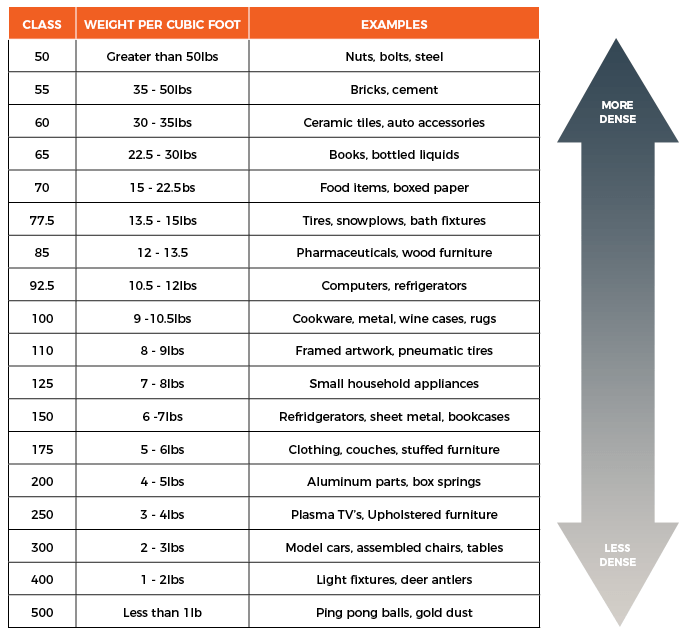Support Home > LTL / Oversized Freight Shipping >
What is Freight Class and NMFC?
Every LTL freight shipment is put into one of 18 freight classes, as defined by the National Motor Freight Traffic Association (NMFTA).
Typically, the higher the freight class, the higher the cost to ship. Please refer to the guide below for examples.
The freight class that your commodity falls into is based on the following characteristics:
- Density – Freight density is the weight of the shipment in relation to its size. Think of the amount of space the freight will take up on a trailer in relation to its weight. For example, 50 pounds of feather pillows (low density) will occupy much more space than 50 pounds of bricks.
- Ease of Handling – What kind of care is required? Is it fragile?
- Stowability – What is the size and shape of the commodity? Can it be stacked? Is it an irregular shape?
- Liability – How valuable is the commodity? How susceptible is it to theft or damage?
These factors help determine the freight class for any given shipment and make it easy for transport companies to determine the cost to move it.
Within the 18 freight classes, commodities are further classified into sub-classes by NMFC codes. Using NMFC codes to create an LTL shipment with ShipNerd is optional but is recommended for the most accurate rate quotes. Freight carriers can typically provide you with your commodities specific NMFC code.
